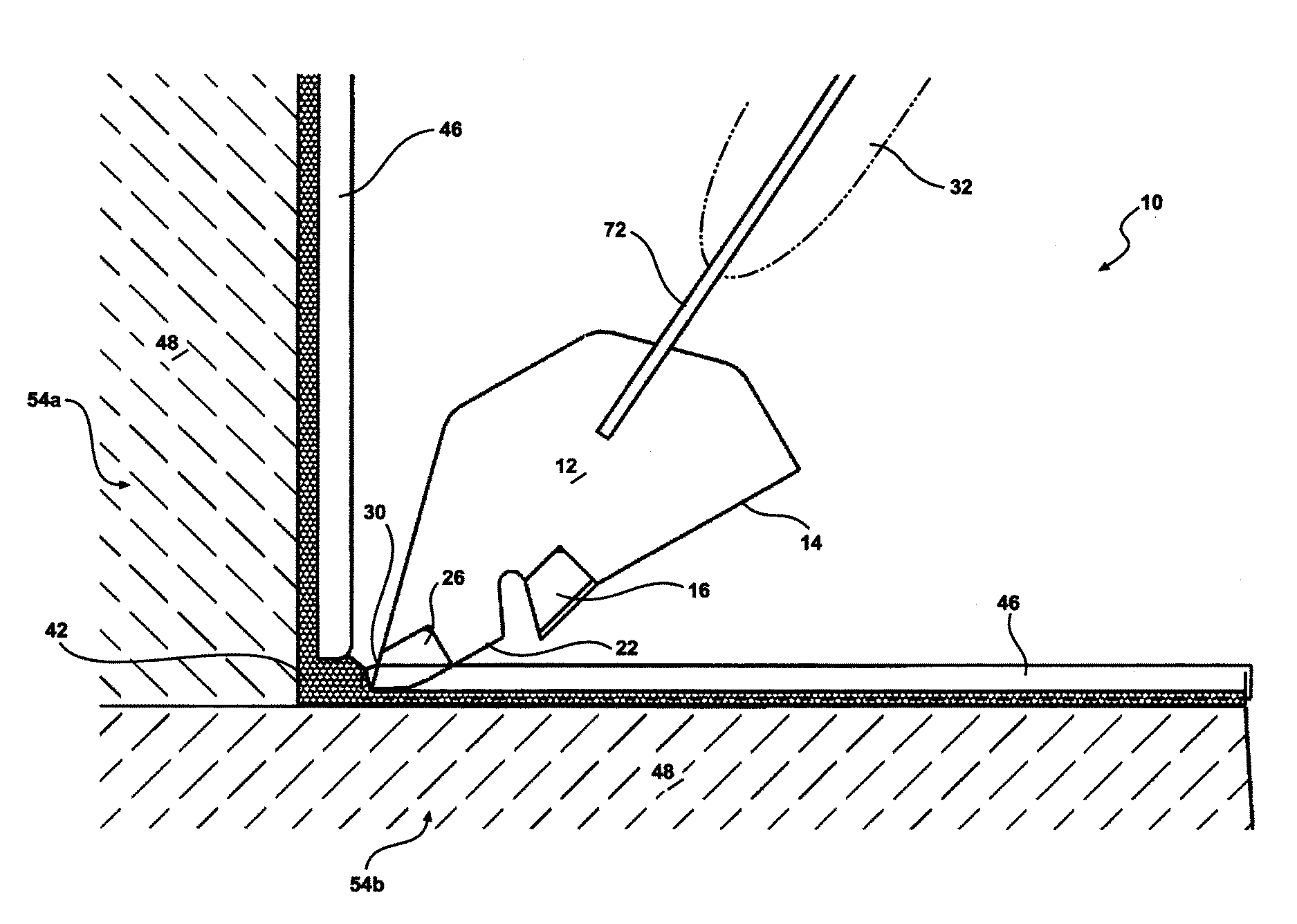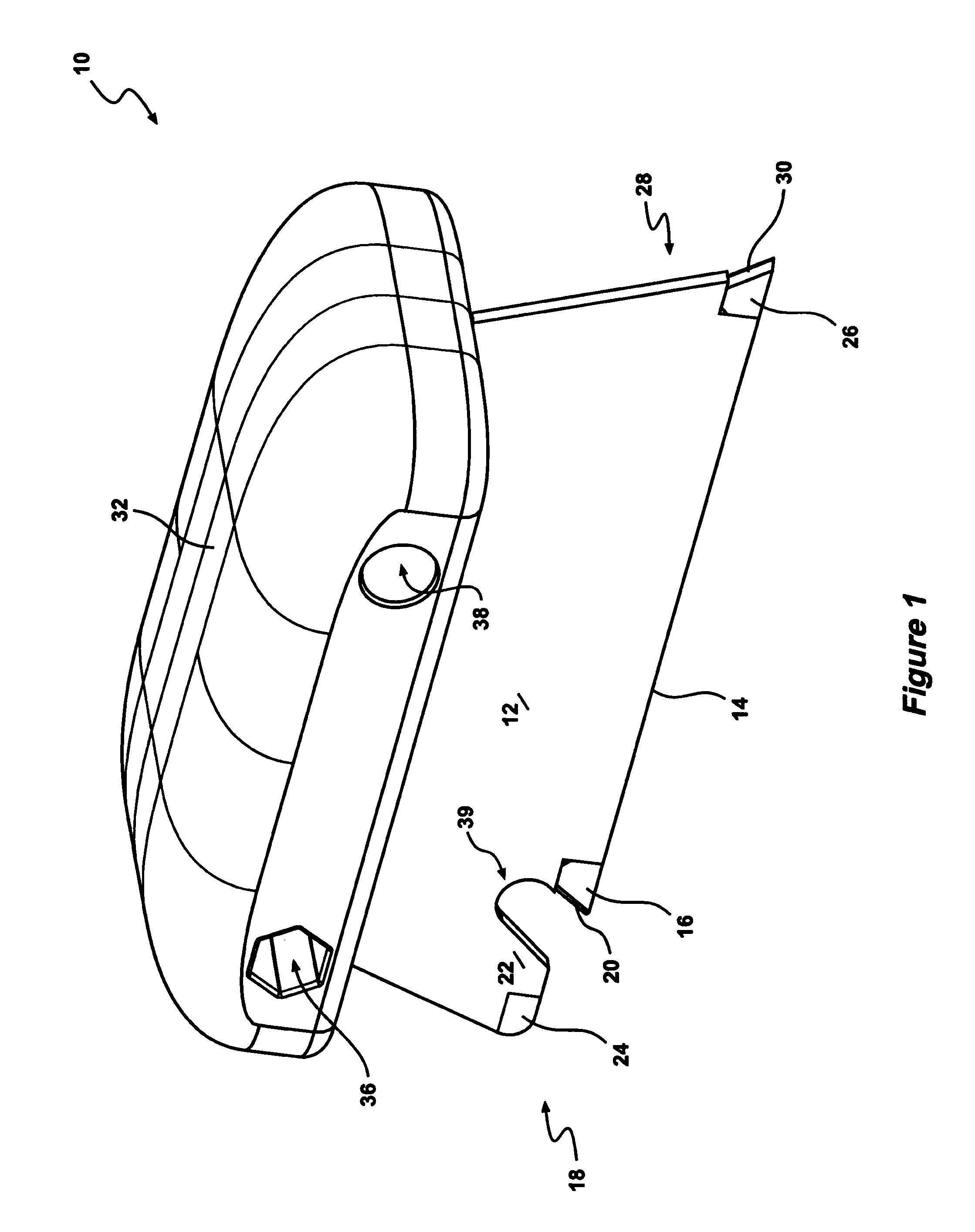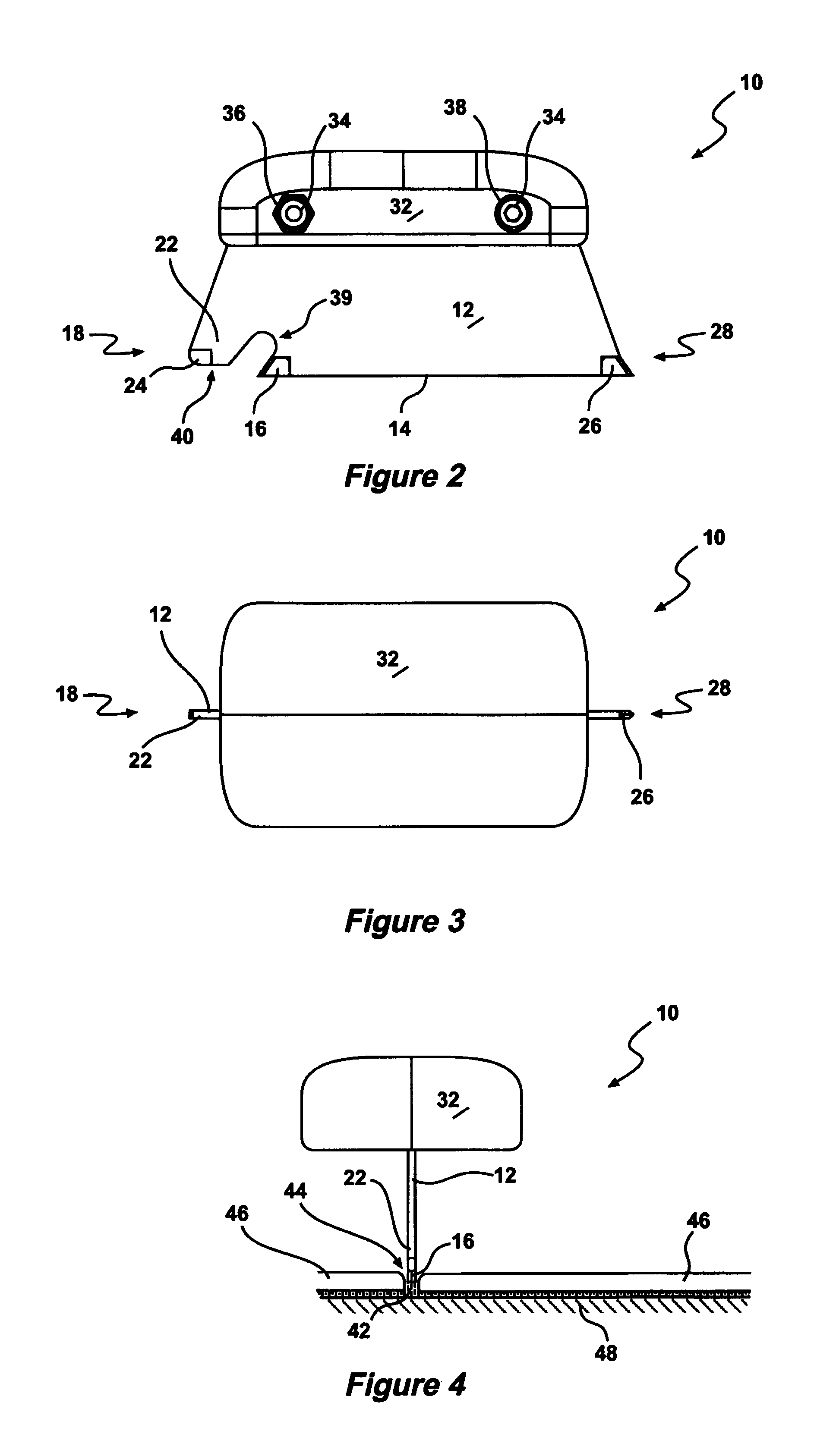Grout removal and masonry trenching tool
a technology of grout removal and masonry trenching, which is applied in the direction of carpet cleaners, other artistic work equipments, decorative arts, etc., can solve the problems of grout discolouration and breakage, process requires significant effort, and grout can become discoloured and susceptible to breakag
- Summary
- Abstract
- Description
- Claims
- Application Information
AI Technical Summary
Benefits of technology
Problems solved by technology
Method used
Image
Examples
Embodiment Construction
[0058]There are numerous specific details set forth in the following description. However, from the disclosure, it will be apparent to those skilled in the art that modifications and / or substitutions may be made without departing from the scope and spirit of the invention. In some circumstances specific details may have been omitted or enlarged so as not to obscure the invention. Similar reference characters indicate corresponding parts throughout the drawings.
[0059]The tool 10 of the present invention has a number of uses. In the first embodiment it may be used as a grout removing device having a cutting tip between 1.0 mm-5.0 mm wide. In a second embodiment the tool 10 may be attached to, or comprise a lightweight electric impact chisel, or may be a hand operated tool. The tool 10 may also be used for heavy-duty use in the process of grooving, trenching or chasing in masonry, brickwork or wall plaster for electrical cable or water pipes etc.
[0060]In one embodiment, the tool may be...
PUM
| Property | Measurement | Unit |
|---|---|---|
| angle | aaaaa | aaaaa |
| depth | aaaaa | aaaaa |
| distance | aaaaa | aaaaa |
Abstract
Description
Claims
Application Information
 Login to View More
Login to View More - R&D
- Intellectual Property
- Life Sciences
- Materials
- Tech Scout
- Unparalleled Data Quality
- Higher Quality Content
- 60% Fewer Hallucinations
Browse by: Latest US Patents, China's latest patents, Technical Efficacy Thesaurus, Application Domain, Technology Topic, Popular Technical Reports.
© 2025 PatSnap. All rights reserved.Legal|Privacy policy|Modern Slavery Act Transparency Statement|Sitemap|About US| Contact US: help@patsnap.com



